Two days ago, Apollo 11 blasted off from Cape Kennedy's Pad 39A, destination: Moon. KGJ, our affiliated TV station, will be simulcasting CBS coverage of the landing and Moonwalk starting at noon, Pacific time, on July 20th, and going all day from then.

Please join us for this once-in-a-lifetime event!

by Kaye Dee
"Lift off. We have lift off”, Launch Control at Kennedy Space Centre (KSC) excitedly announced, as Apollo 11’s Saturn-V thundered off the pad just two days ago! While a Saturn-V liftoff is no longer a new occurrence at KSC, this launch was special. An astronaut crew is now on the way to fulfill the millenium-old human dream of reaching the surface of the Moon!
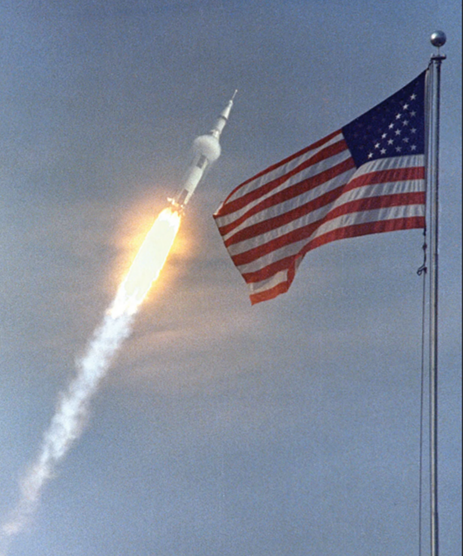
Describing Apollo 11 as Mankind’s “greatest adventure” has already become hackneyed and overused. And yet, I didn’t really feel that I could give this article today any other title – because the attempt to land the first astronauts on the Moon is an incredible adventure: some commentators are calling it the greatest human adventure since our hominid ancestors ventured out of Africa to explore the world. Is that hyperbole? Perhaps. But it is a daring exploit to venture out from our home planet, across a totally inimical environment, and actually set foot on another world for the first time.

This mission is exciting, complex and – yes – dangerous, so to follow it all, I’m once again going to divide my coverage of it into two parts, beginning today with some background for the mission and its launch. The second part will follow, after the astronauts’ (hopefully) successful return to Earth.
Where to Land?
Operational and engineering considerations have played the major role in dictating where the first astronauts will land on the Moon. Over the last two years, intense analysis has gradually winnowed down some thirty possible landing sites originally suggested based on Lunar Orbiter images and Surveyor lander data and more recent close-up imagery from Apollo-8 and 10.
Several constraint parameters have determined the Apollo-11 landing site and its backup landing locations. The Moon has a peculiar lighting characteristic, in that it reflects the light from the Sun directly back into your face, and it was a concern to the astronauts that they might be dazzled by this reflected light while trying to land. To avoid this, they wanted to have the Sun only about 10 degrees above the horizon, meaning that the Lunar Module (LM) must fly in from the east with the Sun behind it, to land shortly after sunrise, when surface objects cast revealing shadows to identify possible hazards around the landing site.

This trajectory for landing means that the landing site had to be east of the lunar meridian, so that if the launch was delayed for a few days, back-up sites would still have suitable lighting. NASA wanted the site to be within 5° of the lunar equator, as a higher latitude site would consume more fuel, and fuel economy is an important consideration for this first landing attempt. Finally, mission planners wanted a relatively flat landing site for the initial landing, free from sharp ridges, large boulders or steep sided craters.

A “Water Landing” on a Dry World
These constraints required the location for the first manned lunar landing to be a “mare” region (those areas thought by ancient sky-gazers to be lunar seas) near the Moon’s equator, with the choice settling on the Mare Tranquillitatis (Sea of Tranquility). This area provided two possible landing targets designated ALS (Apollo Landing Site)-1 and ALS-2.
 Map showing the final five prospective landing sites for Apollo-11. Site 2 is the selected location for the landing attempt
Map showing the final five prospective landing sites for Apollo-11. Site 2 is the selected location for the landing attempt
The selected site, ALS-2, is only 25 kilometres southeast of the Surveyor-5 landing site, and when Apollo 10 made a low pass over the spot it received a favourable report from Commander Tom Stafford.
 Apollo-10 view of the Apollo-11 landing site
Apollo-10 view of the Apollo-11 landing site
ALS-2 would also allow a two-day recycle in the case of a delay, to the next back-up site in Sinus Medii. Last, but not least, the choice of ALS-2 has made the scientists happy, since it will provide them data from a typical mare site.
A Crew to Make History
For the astronauts of Apollo-11, becoming the crew that would make the historic first lunar landing attempt has been a matter of luck and crew rotation, rather than deliberate selection. As the back-up crew for Apollo-8, Neil Armstrong and Edwin Aldrin were automatically rotated into the prime crew for Apollo-11. The third member of that back-up team, Fred Haise, was replaced by Michel Collins, following his return to flight status after surgery for a bone spur in his neck. (Haise has now been switched to the Apollo 14 crew).
 L. R. Neil Armstrong, Michael Collins and Edwin "Buzz" Aldrin
L. R. Neil Armstrong, Michael Collins and Edwin "Buzz" Aldrin
We already know that Apollo-10 was a brief contender to make the first landing attempt, while had that mission failed to achieve all its “rehearsal” objectives, Apollo-11 would now be repeating its flight plan. In that case, Apollo-12 would have become the first landing attempt – and should Apollo-11 fail to achieve its landing objective, Apollo-12 may yet become the first Moon landing mission.
While perhaps not “hand-picked” for the job, the current Apollo-11 crew, formally announced on 9 January this year, are certainly up to the task of ensuring the success of this history-making spaceflight!
 Apollo-11 crew portrait at the announcement of their selection
Apollo-11 crew portrait at the announcement of their selection
Spaceflight Veterans
Each member of the Apollo-11 crew is a veteran of one previous space mission, so we have met them before in the annals of the Journey.
Mission Commander Mr. Neil Armstrong, 38, was the Command Pilot of the Gemini-8 mission, which experienced NASA’s first in-flight emergency. He safely rescued that mission by drawing on his extensive test flight experience. As a civilian, Mr. Armstrong earns $US22,500 a year from NASA, making him the most highly paid of all the astronauts.
 A lovely portrait of the Apollo-11 crew with their wives and children, from Life magazine
A lovely portrait of the Apollo-11 crew with their wives and children, from Life magazine
USAF Colonel Edwin Aldrin, 39, known to his family as “Buzz” and to his astronaut colleagues as Dr. Rendezvous, is the designated Lunar Module Pilot (LMP). Col. Aldrin was the Pilot of Gemini-12, performing three successful spacewalks. If the onboard radar fails, this is a man who can manually complete the rendezvous using a sextant and a slide rule!
Also a Colonel in the US Air Force, Michael Collins is the Command Module Pilot (CMP) for this mission. His first spaceflight was Gemini-10, for which he was the Pilot, performing both a “stand-up” EVA (standing in the hatch of the spacecraft) and a partially-successful spacewalk.
Who’s First Out the Hatch?
At the very first press conference for the Apollo 11 crew in January, on the assumption that it would be the first landing mission, a reporter raised the question of who would be the first astronaut to step onto the Moon. Early mission flight plans and timelines noted that the LM Pilot would step out first, and this scenario was consistent with the practice on the Gemini missions, where the Pilot would make the Extravehicular Activities (EVAs), rather than the Command Pilot.
 Fish-eye view of astronauts Aldrin and Armstrong as they train in a mock-up lunar module
Fish-eye view of astronauts Aldrin and Armstrong as they train in a mock-up lunar module
However, in April it was announced that Mr. Armstrong, as mission commander, would be the first to step onto the lunar surface. Col. Aldrin, apparently expecting to be first out of the hatch, is rumoured to have been put out by this, especially when there were some stories flying around that he had been sidelined in favour of Armstrong because the commander was a civilian. Aldrin is said to have felt this to be a slight to the military.
A Quiet Hero
There is an official NASA rationale for the decision that Mr. Armstrong should be the first person to exit the LM and step onto the lunar surface: the interior design of the Lunar Module and the physical locations of the two astronauts inside the cabin makes it more practical for Armstrong to be the first one out. As LMP, Col. Aldrin will stand on the right side of the LM, while Mr. Armstrong, on the left, will be closest to the hatch opening.
 Diagram of a forward view of the LM, showing the Commander's station the let and the LMP station to the right. It would have been difficult for Armstrong and Aldrin to swap places in this very cramped interior
Diagram of a forward view of the LM, showing the Commander's station the let and the LMP station to the right. It would have been difficult for Armstrong and Aldrin to swap places in this very cramped interior
I have heard through the grapevine at the Honeysuckle Creek Tracking Station that senior NASA managers decided unanimously in March that they wanted Mr. Armstrong to be the First Man on the Moon, because they felt that the first human to set foot on another world should be someone like the pioneering aviator Charles Lindbergh – a calm and quiet person. Armstrong fitted this mould as “the example of the great American hero – calm, quiet, softly spoken, with absolute confidence and with no ego”.

 Charles Lindbergh and Neil Armstrong – seen by NASA managers as two men in the same quietly heroic mould. There is certainly something similar in their facial expressions
Charles Lindbergh and Neil Armstrong – seen by NASA managers as two men in the same quietly heroic mould. There is certainly something similar in their facial expressions
Flight Operations Director Deke Slayton is also said to have felt that, as Commander, it was a matter of protocol that Mr. Armstrong should be first out the hatch, especially as he was senior to Col. Aldrin, having joined the astronaut corps in Group Two, while Aldrin entered in Group Three.
But whatever the reasoning, as long as the landing on the lunar surface is a success, Neil Armstrong looks set to become the astronaut whose name will reverberate through history as the First Man on Moon in just a few days’ time.
Symbolic Callsigns
As was the case with Apollo-9 and 10, Apollo-11 requires separate callsigns for the Command and Lunar Modules when they are operating independently at the Moon. Given the globally significant nature of this flight, and its symbolic role in winning the Space Race for the United States by landing the first astronauts on the lunar surface ahead of the USSR, the crew, according to Mr. Armstrong, were inundated with suggestions for the names of their spacecraft.
NASA Public Affairs wanted the Apollo-11 crew to be “less flippant” in selecting their spacecraft names following the more light-hearted choices of the Apollo-9 and 10 crews. While I’ve heard that the names Snowcone (CM) and Haystack (LM) were referred to early in mission planning, ultimately the Apollo-11 astronauts selected the names Columbia (for the CM) and Eagle (for the LM) as being suitably representative of the historic nature of the mission.
 1915 US coin depicting Columbia and the American eagle
1915 US coin depicting Columbia and the American eagle
Columbia (a feminine form derived from the name of Christopher Columbus) is the traditional female personification of the United States. This name is also a nod to Jules Verne’s spacecraft “Columbiad” (from the 1865 novel From the Earth to the Moon), which was the name the Apollo-8 crew wanted to use for their historic Command Module.
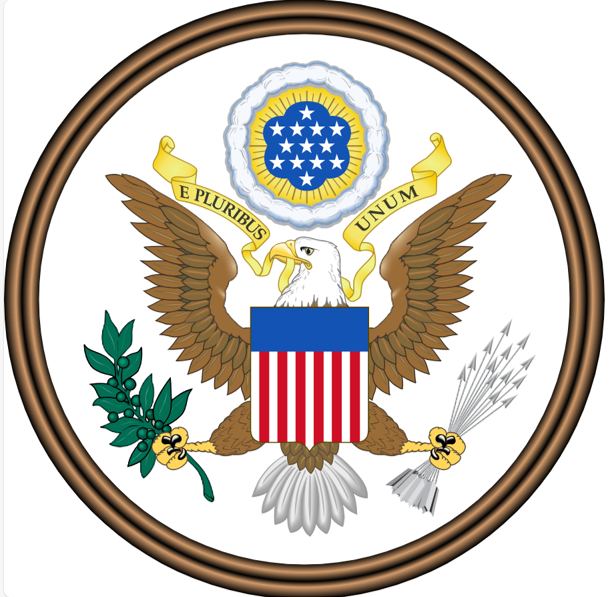 The obverse of the Great Seal of the United States depicts a bald eagle carrying both an olive branch and a bundle of arrows in its claws, symbolising war and peace
The obverse of the Great Seal of the United States depicts a bald eagle carrying both an olive branch and a bundle of arrows in its claws, symbolising war and peace
The bald eagle is, of course, the symbolic bird of the United States, depicted on the Great Seal of the United States and the National Coat of Arms. It also appears on the seal of the US Department of the Air Force – and Col. Aldrin and Col. Collins are both USAF officers.
And a Symbolic Mission Patch
The association of the eagle with the United States is a motif that also occurs in the design of the Apollo-11 mission patch. In fact, the deciding factor in selecting the name “Eagle” for the Lunar Module was the patch design already under development, that depicted an American bald eagle landing on the Moon.

Mr. Armstrong’s backup, Captain Jim Lovell, is credited with originally suggesting the symbol of an eagle on the mission patch.
Some early sketches for an Apollo 11 patch were prepared by Allen Stevens of Rockwell International, who has been involved with the development of several Apollo mission patches, but Astronaut Collins seems to have had a major role in the final design.
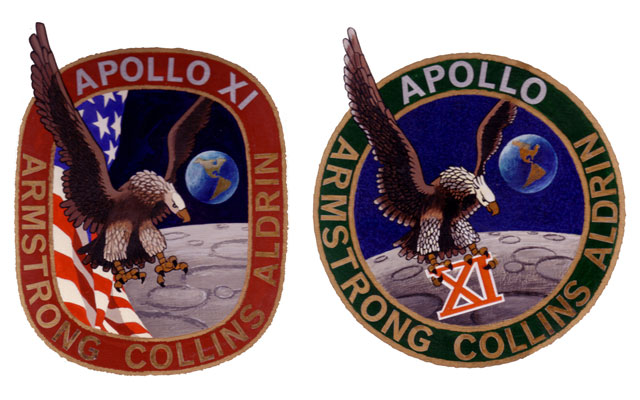 Allen Stevens early designs for the Apollo-11 patch incorporated the names of the crew and the Roman numeral XI
Allen Stevens early designs for the Apollo-11 patch incorporated the names of the crew and the Roman numeral XI
Col. Collins found a depiction of a bald eagle in a National Geographic book on birds that he considered ideal – the eagle with its wings partially folded, swooping down with its talons extended.
 (left) A beautiful eagle painting by National Geographic Society staff artist Walter A Weber, first published in the July 1950 issue of National Geographic magazine, was re-used and re-oriented (below) for the book that inspired Michael Collins
(left) A beautiful eagle painting by National Geographic Society staff artist Walter A Weber, first published in the July 1950 issue of National Geographic magazine, was re-used and re-oriented (below) for the book that inspired Michael Collins
Tracing the picture, Collins then sketched in the Moon’s surface to give the impression that the eagle was landing, and included an image of the Earth in space in the background above the eagle’s right wing. In the final patch design, the eastern seaboard of the United States and parts of the northern portion of South America are visible on the globe, with a scattering of white clouds over the blue oceans.
As the design evolved, the crew decided on a departure from previous patch designs, leaving off their own names so that the patch could be said to represent all the people involved in the mission, not just the astronauts. Since Armstrong felt that the Arabic number ‘11’ would be more easily understood around the world, the use of the Roman numeral, or Collins’ suggestion of writing out “eleven” were both dropped as design elements.
 An interim step towards the final mission patch design
An interim step towards the final mission patch design
Images and Impressions Matter
NASA simulator instructor Tom Wilson suggested that the eagle carry an olive branch, as a symbol of the United States’ peaceful intentions in landing on the Moon.
 The olive branch was added to the design, depicted as being carried in the eagle’s beak. To round out their design, the three astronauts selected a naturalistic black for the sky, with blue and gold edging around the around the outside of the circular patch.
The olive branch was added to the design, depicted as being carried in the eagle’s beak. To round out their design, the three astronauts selected a naturalistic black for the sky, with blue and gold edging around the around the outside of the circular patch.
NASA illustrator James Cooper produced the finished artwork for this design. However, when the crew submitted it for approval, it was rejected on the basis that the eagle’s powerful talons, extended stiffly below it, were "too warlike", and might give a wrong impression in our Cold War environment, where propaganda imagery matters.
Recalling that in the Great Seal, the eagle carries an olive branch in one set of talons, the olive branch was switched from the beak to the eagle’s claws. Although Col. Collins expressed the thought that “the bird looked a little uncomfortable” depicted in this way, the design was approved and became the official mission patch.
 Artist James Cooper hands over the finsihed version of the final artwork for the Apollo 11 patch to Astronaut Collins
Artist James Cooper hands over the finsihed version of the final artwork for the Apollo 11 patch to Astronaut Collins
Tracking Apollo to the Moon
For the previous Apollo missions, I hadn’t written in any detail about the worldwide NASA tracking network that will be following every second of Apollo-11’s voyage to the Moon and back. Time to fix that, as none of the lunar missions would have been possible without it.
NASA’s global Manned Space Flight Network (MSFN) will be constantly monitoring the flight, using the resources of 17 stations, 4 ships and the 8 aircraft that form the Apollo Range Instrumented Aircraft (ARIA) fleet.
 Map showing the MSFN deployment for Apollo-11's Trans Lunar Injection. The irregular circles mark the reception areas of each tracking station, ship or aircraft
Map showing the MSFN deployment for Apollo-11's Trans Lunar Injection. The irregular circles mark the reception areas of each tracking station, ship or aircraft
Three MSFN stations – at Goldstone in California, Honeysuckle Creek, near Canberra, Australia, and Fresnedillas, near Madrid, Spain – were specifically constructed to support the Apollo missions, being deliberately sited close to existing stations in NASA’s Deep Space Network (DSN) so that the two networks could work together for lunar operations.
 The MSFN tracking station at Goldstone, California
The MSFN tracking station at Goldstone, California
Working Together
The DSN facilities at Goldstone, Canberra and Madrid (which have similar 85ft dishes to those used by the MSFN), will be shadowing the MSFN stations to provide back-up, as well as complementing spacecraft communications at the Moon. During the period when the Columbia and Eagle will be operating independently – with the CM in lunar orbit, while the LM transports Armstrong and Aldrin to the lunar surface and back and during their surface activities – the DSN facility will support tracking and communication with one spacecraft while the MSFN station supports the other.
 The "Pioneer" DSN antenna at Goldstone, with its "Apollo Wing", housing the equipment added to support Apollo missions
The "Pioneer" DSN antenna at Goldstone, with its "Apollo Wing", housing the equipment added to support Apollo missions
In addition, for the planned live television broadcast from the lunar surface during the LM crew’s historic first Moonwalk, the new 210ft antenna at Goldstone is anticipated to be the prime receiving station for the signals from the Moon, with the Parkes Radio Telescope in Australia providing back-up. I’ve mentioned the Parkes telescope previously, in conjunction with the Our World global satellite television broadcast, but what is not generally known is that the design of this 210ft radio telescope was, in fact, the prototype on which the new 210ft dishes of the DSN are based.
 The Parkes Radio Telescope, photographed on the evening of Apollo 11's launch
The Parkes Radio Telescope, photographed on the evening of Apollo 11's launch
 The new "Mars" 210ft antenna at Goldstone
The new "Mars" 210ft antenna at Goldstone
A Tough Training Schedule
It’s hard to believe today that when Alan Shepard made the first Mercury spaceflight, he had only conducted 150 hours of mission simulations. Given the critical nature of the Apollo-11 flight, Armstrong, Aldrin and Collins worked 14-hour days, 6 days a week for a full 6 months before the mission. They each spent over 1,200 hours in simulators wrestling with a continuous stream of missions, frequently peppered with emergencies, equipment malfunctions, and potential catastrophes to test their knowledge, skill, and coolness to the limits.
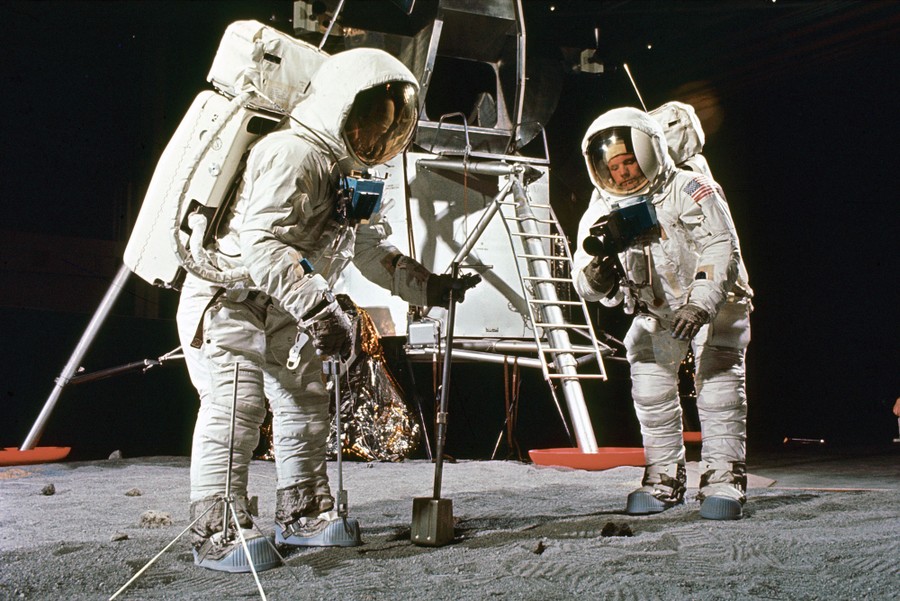 Armstrong and Aldrin practicing their lunar surface activities
Armstrong and Aldrin practicing their lunar surface activities
 CMP Collins concentrates during a session in the LM simulator
CMP Collins concentrates during a session in the LM simulator
 Col. Aldrin during survival training at the U.S. Air Force Air Defense Command Life Support School in Texas
Col. Aldrin during survival training at the U.S. Air Force Air Defense Command Life Support School in Texas
It's well-known that Mr. Armstrong has demonstrated his coolness in emergency situations. Not only did he successfully bring the stricken Gemini-8 safely back to Earth, in May last year, he survived the crash of a Lunar Landing Research Vehicle and shortly afterwards was back at work in his office at the Manned Spacecraft Centre as if his narrow escape had not occurred!

Scientist-Astronaut Dr. Harrison “Jack” Schmitt, a professional geologist, also worked extensively with the Apollo-11 crew, preparing them for lunar rock collecting. After such thorough preparation, the astronauts surely know every twist and turn of the normal and emergency operational procedures, as well as every capricious component of the spacecraft’s 26 subsystems.
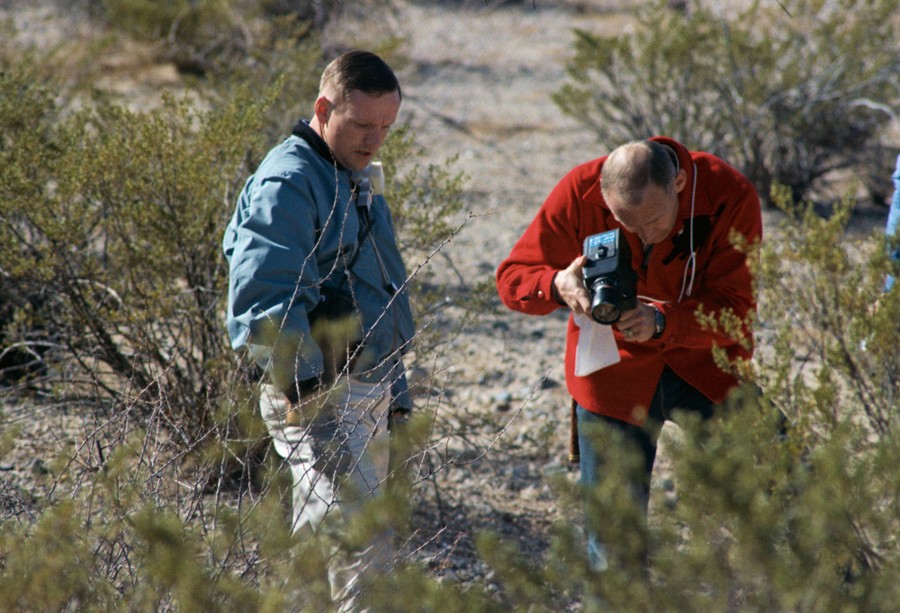 Mr. Armstrong and Col. Aldrin on a geology field trip at Sierra Blanca, Texas
Mr. Armstrong and Col. Aldrin on a geology field trip at Sierra Blanca, Texas
Bringing It All Together
Apollo-11’s Lunar Module, LM-5 and its Command and Service Modules, CSM-107, arrived at Kennedy Space Centre in January. LM-5 has several differences from Apollo 10's Lunar Module, customising it for an actual landing on the Moon. These include: a VHF radio antenna to facilitate communication with the astronauts during their time on the lunar surface; a lighter ascent engine and more thermal protection on the landing gear. The LM is also carrying a scientific instrument package – the Early Apollo Scientific Experiments Package (EASEP), which will be deployed on the Moon.
 LM-5 being checked out at KSC prior to being installed for launch in in the Saturn-V
LM-5 being checked out at KSC prior to being installed for launch in in the Saturn-V
Apollo-11’s Saturn-V vehicle, AS-506, was rolled out of the Vehicle Assembly Building on 20 May, and transported to Launch Pad 39A while Apollo 10 was still on its way to the Moon. A countdown test was conducted between 26 June and 2 July, which went extremely smoothly, without any major issues – hopefully a good omen for the entire mission.
 The Apollo-11 launch vehicle arrives at Pad 39A, in preparation for the historic flight
The Apollo-11 launch vehicle arrives at Pad 39A, in preparation for the historic flight
Avoiding Any Infections
To prevent the crew from picking up any infections that might lead to illnesses causing delays to the mission, since a brief visit home with their families (whom they will not see up close again after their release from quarantine in August if all goes to plan) for the Fourth of July holiday, the astronauts have been kept carefully isolated from all un-necessary contacts.
A dinner with the crew, proposed by President Nixon for the night before launch, was cancelled, while at their last press conference before the launch, Mr. Armstrong and Colonels Aldrin and Collins were stragetically placed on a platform so that air flowed from behind them towards the assembled press corps, in hope that this would keep any germs from the audience reaching the astronauts!
 The Apollo-11 crew at their final press conference, hoping to avoid any germs!
The Apollo-11 crew at their final press conference, hoping to avoid any germs!
At their final medical checks, all three astronauts were pronounced fit and ready for flight – so one assumes that the precautions worked as intended.
Pre-flight Preparations
The final preparations for Apollo-11’s launch continued the now established pattern for Apollo missions, with an early morning wake-up for the crew, the traditional pre-flight breakfast of steak and eggs with Flight Operations Director Deke Slayton and the backup crew, followed by the ritual of suiting up. A small folding shovel with plastic sample bags were placed in the special pocket of Mr. Armstrong’s spacesuit, to be used should the astronauts’ stay on the Moon be cut short for any reason: at least they would return to Earth with a few lunar soil samples.
 L. The Apollo-11 crew enjoy their traditional pre-flight breakfast; R. Suited and ready for space, the astronauts enter their transfer van for the ride to the launch pad
L. The Apollo-11 crew enjoy their traditional pre-flight breakfast; R. Suited and ready for space, the astronauts enter their transfer van for the ride to the launch pad
When the crew arrived at Pad 39A, the White Room crew chief, Guenter Wendt, greeted them holding a 4ft long "key to the Moon", which he presented to Neil Armstrong. Mr. Armstrong in turn gave Wendt a card reading, “Space Taxi ticket, good between any two planets.”
At three minutes and twenty seconds before launch, the countdown became automated, and over 450 personnel at the consoles in Launch Control Firing Room 1 turned their eyes to watching that very special Saturn-v leave the tower and soar into the sky.

A Million Spectators?
The Cocoa Beach Chamber of Commerce estimated that perhaps one million spectators would gather to watch the launch of Apollo-11 from the highways, beaches and waterways within the vicinity of Kennedy Space Centre. CBS news later reported that the number was closer to 300,000; local motel owners, charging rates as high as $65 a night, were reportedly disappointed. Nevertheless, the essentially uncountable number was still the highest ever to attend a space launch.
 A crowd of spectators in Titusville, near KSC, ready to watch the launch
A crowd of spectators in Titusville, near KSC, ready to watch the launch
These spectators included a group from the American Poor People's Campaign demonstrating against the expenditure on space exploration, when people are going hungry in the United States. The Campaign director, Mr Hosea Williams, said the demonstration included hungry people from five southern States. “We're not against things like the space shot” he said, explaining the reason for their protest. "But there's been a miscalculation in priorities". NASA Administrator Paine agreed to host protesters as spectators at the launch. Awestruck, by the powerful spectacle of the rocket's launch, they prayed for the astronauts, despite protesting the mission itself.
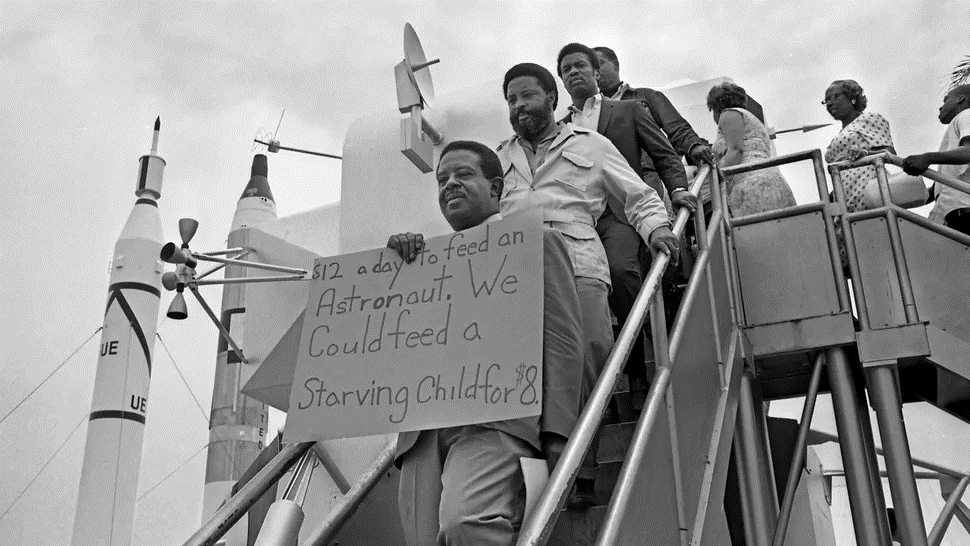
Although President Nixon decided to watch the launch on television in the White House, Vice President Agnew and former president Johnson and his wife were among the VIP guests at the launch site. Other dignitaries at the launch included the Chief of Staff of the United States Army, four members of the Cabinet, 19 state governors, 40 mayors, 60 ambassadors and 200 congressional representatives. There were approximately 3,500 press, radio and television representatives: while the majority were from the United States, 55 other countries were also represented in the media contingent.
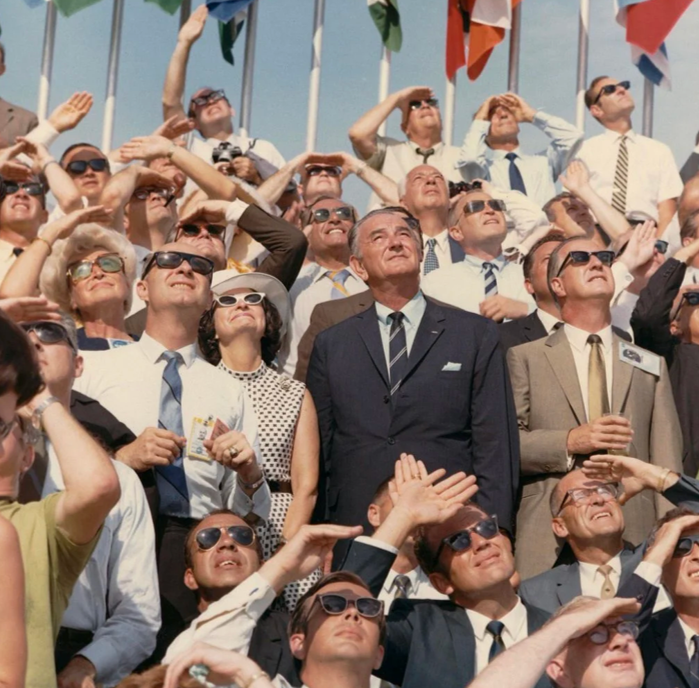 President and Mrs. Johnson, with Vice President Agnew, were among the VIPS watching the launch from Kennedy Space Centre, along with a huge press corps.
President and Mrs. Johnson, with Vice President Agnew, were among the VIPS watching the launch from Kennedy Space Centre, along with a huge press corps.
It is estimated that 25 million people tuned in to watch the launch in the US, while thanks to satellite communications, the lift-off was televised live in 33 countries, including Australia. Millions more around the world listened in to radio broadcasts of the launch.
Despite the late night timeslot of the launch here in Australia (11.32pm), thousands of households around the country stayed up to watch. Like many other parents, my sister and her husband roused their children from bed to join the viewing audience: they even sat their eight-month-old baby on the couch to watch. He may not remember it, but at least in the future he will be able to honestly say that he saw the launch of Apollo-11!
Lift off into History!
At last, on 16 July, at 9.32am EDT, Apollo-11 lifted off into history, rising slowly at first from the launch pad. The three astronauts have reported that they were not aware of the moment of lift-off, but first felt a powerful thrust to their backs, accompanied by a distant rumble, sounding rather like a train. They were thrown left and right against their straps in spasmodic jerks as the 36 storey vehicle adjusted itself to wind effects, to keep on the planned course.
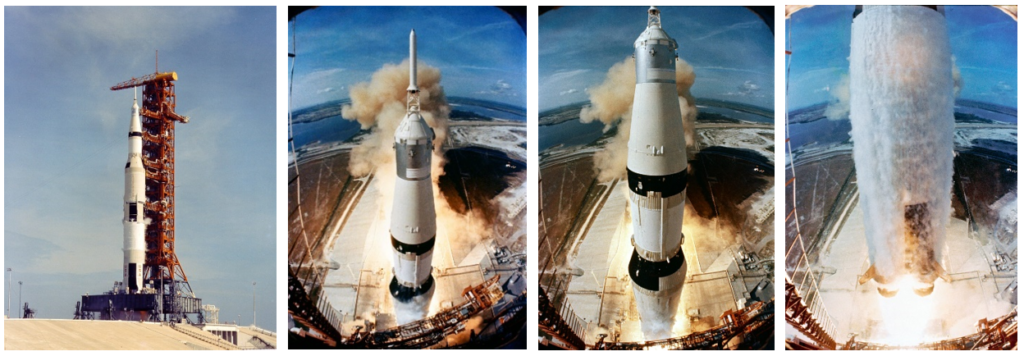
Within forty seconds the Saturn-V was travelling faster than the speed of sound, and the noise in the cabin dropped away. However, Commander Armstrong noted that those first 40 seconds of flight were uncomfortably noisy and rough, much worse than the Gemini Titan launches. He reported that he found it was hard to hear any voices in his earphones, even with his helmet on.
Twelve minutes into the flight, Apollo-11 entered a near-circular Earth orbit. Within 30 minutes, the astronauts were feeling so relaxed that they were playing with the onboard still and movie cameras as they plunged into the night over Tananarive. The powerful FPQ6 radar at the Carnarvon tracking station in Western Australia confirmed that Apollo-11 was in the planned parking orbit, and on the second orbit over Carnarvon, the Capcom at Houston gave the astronauts the “Go!” for the Trans-Lunar Injection (TLI) burn that would send Apollo-11 on the way to the Moon.
 The FPQ6 radar at Carnarvon tracking station that confirmed Apllo-11's initial orbit. This MSFN station also relayed the TLI confirmation to the spacecraft
The FPQ6 radar at Carnarvon tracking station that confirmed Apllo-11's initial orbit. This MSFN station also relayed the TLI confirmation to the spacecraft
On the Way to the Moon
With the Apollo-11 crew now on their way to the Moon, I have no more photos from the mission to share, until they return to Earth with their film canisters hopefully filled with wonderful images from the flight.
To quickly summarise the activities since TLI, about 30 minutes post-TLI, Col. Collins performed the transposition, docking, and extraction manoeuvre, needed to free the LM for the voyage to the Moon. Since leaving Earth orbit, the Apollo-11 crew has quickly settled into routine. After the docking with the LM, they astronauts exchanged their bulky pressure suits for their more comfortable white Teflon jump suits and consumed a lunch of beef and potatoes, butterscotch pudding, and brownies washed down with grape punch.
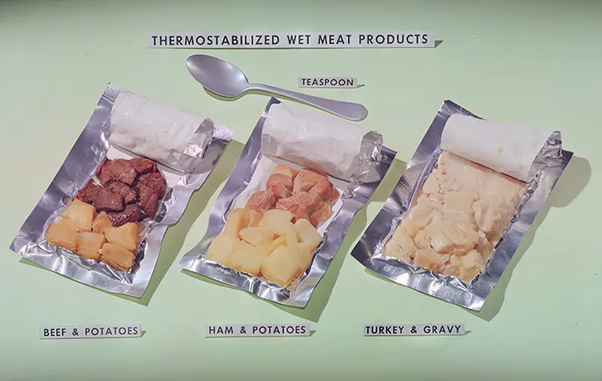 The crew's first in-flight meal included beef and potatoes, made possible by the new thermostabilised wet pack container technique that is expanding the range of available meals for Apollo flights
The crew's first in-flight meal included beef and potatoes, made possible by the new thermostabilised wet pack container technique that is expanding the range of available meals for Apollo flights
During that first day in en route for the Moon, the astronauts said that the Moon didn’t seem to be getting bigger, although the Earth was visibly shrinking. At 11 hours and 20 minutes after launch, they settled down for a sleep period, about 2 hours early, made possible by the cancellation of a mid-course correction.
Television Tryout
Just before 23 hours into the flight, the crew’s second day in space began with a wake-up call from Houston. Then, at the 30 hour mark, there was a 50 minute trial television broadcast from the spacecraft using the omni-directional antennae, which was received at the Goldstone tracking station. This impromptu broadcast showed some spectacular colour views of the Earth, I'm told, and provided practice for the crew's first public television broadcast a few hours later. The astronauts also showed themselves “running” in their seats, while asking if the medical team was receiving their heartbeat data. Goldstone reported they could see the astronauts trying to run in their seats, and Capcom Charles Duke in Houston indicated that the medical telemetry was being received.
This marks the point at which I will have to complete this article to send it via telex to the Traveller, so we’ll pick up the second part of story of Apollo-11's great adventure once the mission has returned, hopefully safely and successfully from the Moon.
Just the Beginning
If Apollo-11 achieves all its mission goals, it will be just the first small step in the exploration of our local neighbourhood in space, the true beginning of our road to the stars.
Neil Armstrong, who will soon become the first person to set foot on another world has said “I think we’re going to the Moon because it’s in the nature of the human being to face challenges. It’s by the nature of his deep inner soul…we’re required to do these things just as salmon swim upstream”. I think he’s right!




 Salvadoran President and General Fidel Sanchez Hernandez inspecting the troops.
Salvadoran President and General Fidel Sanchez Hernandez inspecting the troops. A robot carrying off a fainting human woman. It’s not as old-fashioned as you might think. Art by Chaffee
A robot carrying off a fainting human woman. It’s not as old-fashioned as you might think. Art by Chaffee
![[August 2, 1969] Specters of the past (September 1969 <i>IF</i>)](https://galacticjourney.org/wp-content/uploads/2024/07/IF-1969-09-Cover-494x372.jpg)
![[July 31, 1969] Stranger than fiction (August 1969 <i>Analog</i>)](https://galacticjourney.org/wp-content/uploads/2024/07/690731analogcover-672x372.jpg)





![[July 28, 1969] <i>New Worlds – on a Budget</i>, August 1969](https://galacticjourney.org/wp-content/uploads/2024/07/cover-august-69-672x372.jpg)

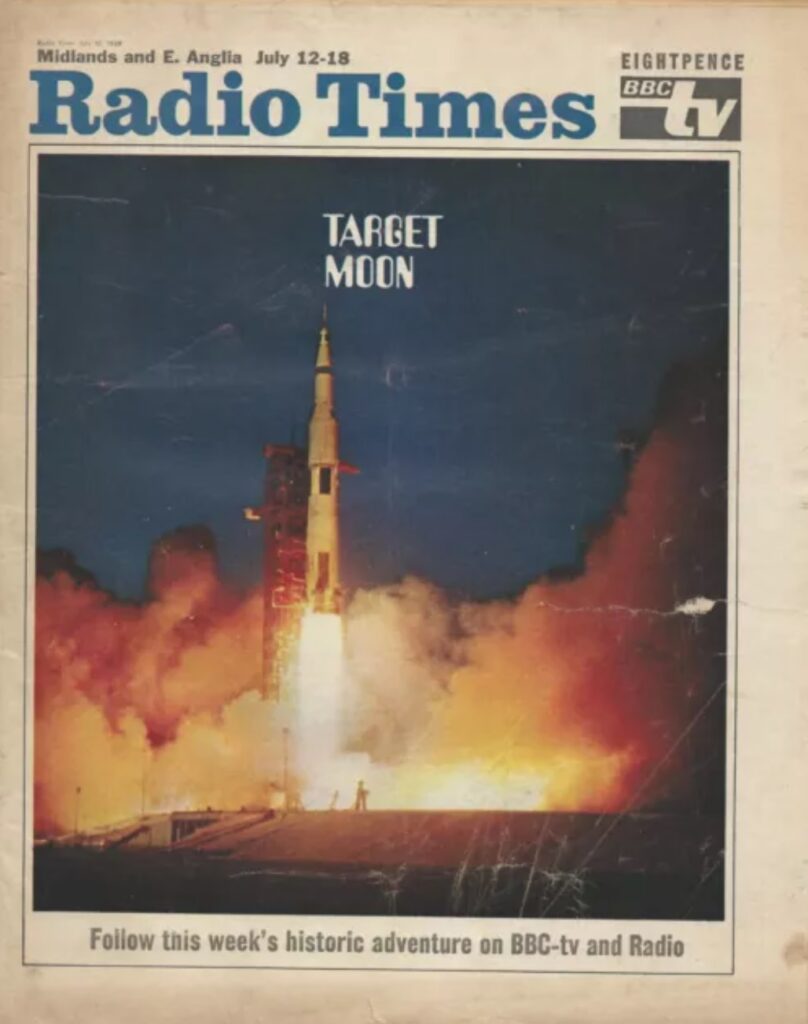
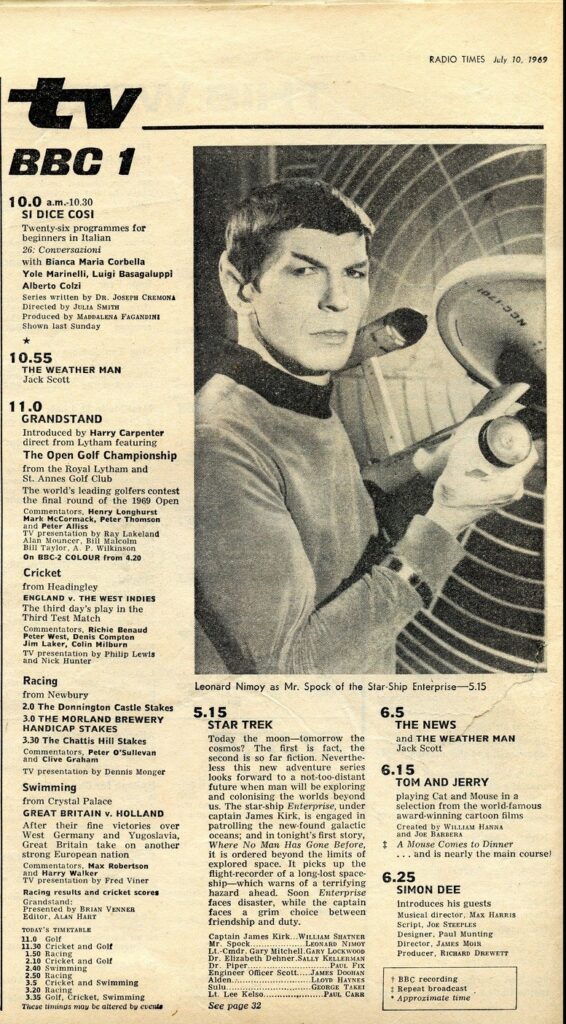 Programme description from The Radio Times, 12th July.
Programme description from The Radio Times, 12th July.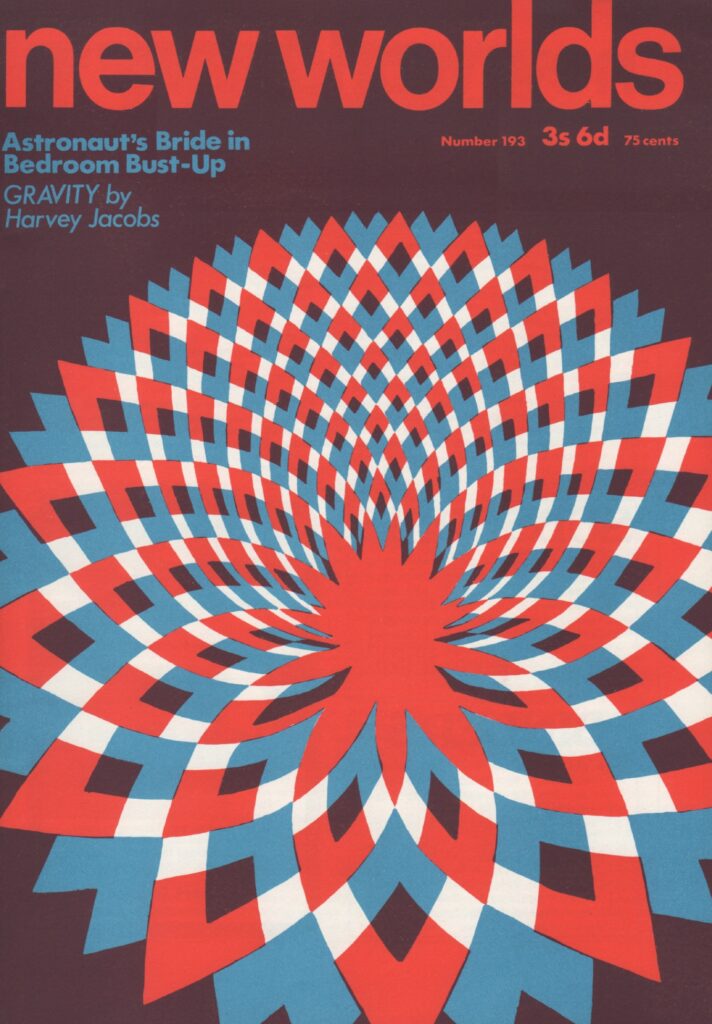 Cover by Charles Platt
Cover by Charles Platt 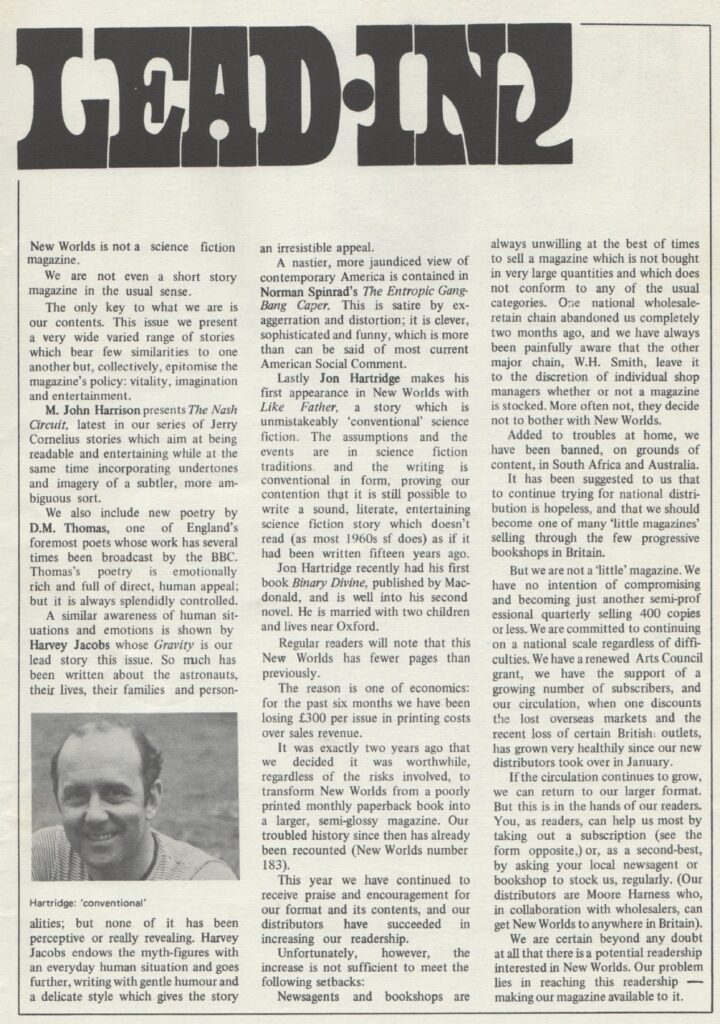
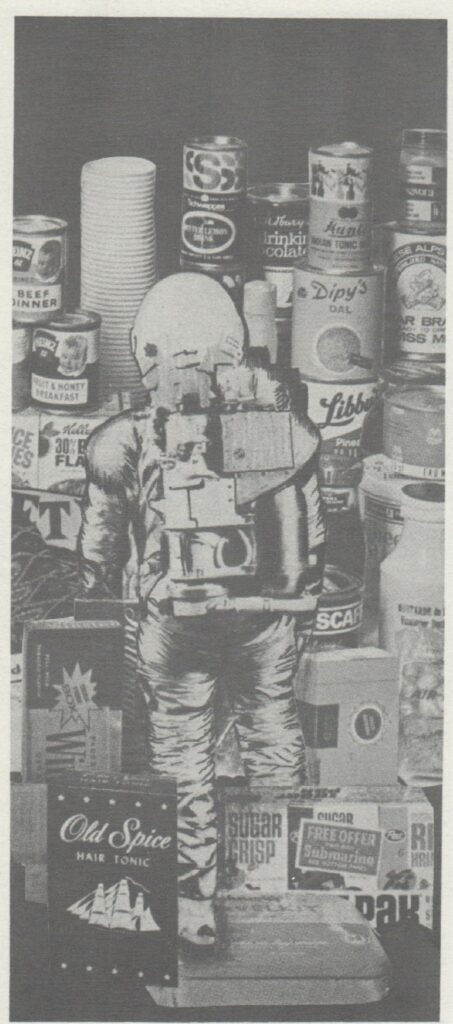 Photo by Gabi Nasemann
Photo by Gabi Nasemann  Sketch by R. Glyn Jones
Sketch by R. Glyn Jones  Photo by Gabi Nasemann
Photo by Gabi Nasemann 


![[July 26, 1969] California Dreams…and Nightmares ("The Late, Great State of California")](https://galacticjourney.org/wp-content/uploads/2024/07/690726cover-672x372.jpg)
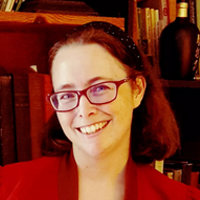
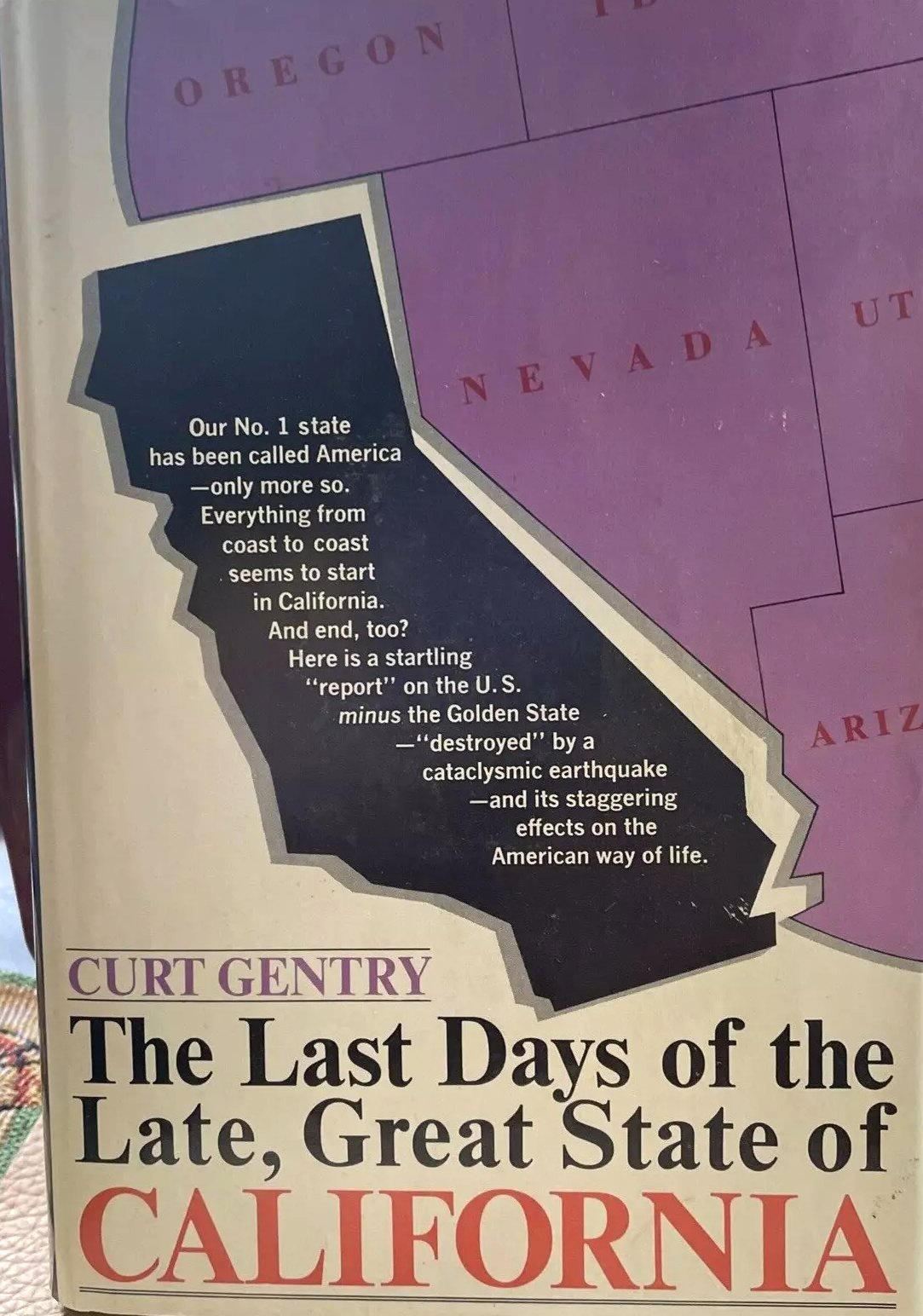
![[July 24, 1969] Bursting at the Seams (with Monsters) (Godzilla film: <i>Destroy All Monsters</i>)](https://galacticjourney.org/wp-content/uploads/2024/07/690724title-672x372.jpg)
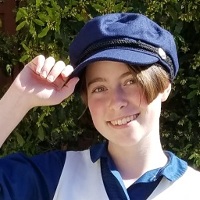







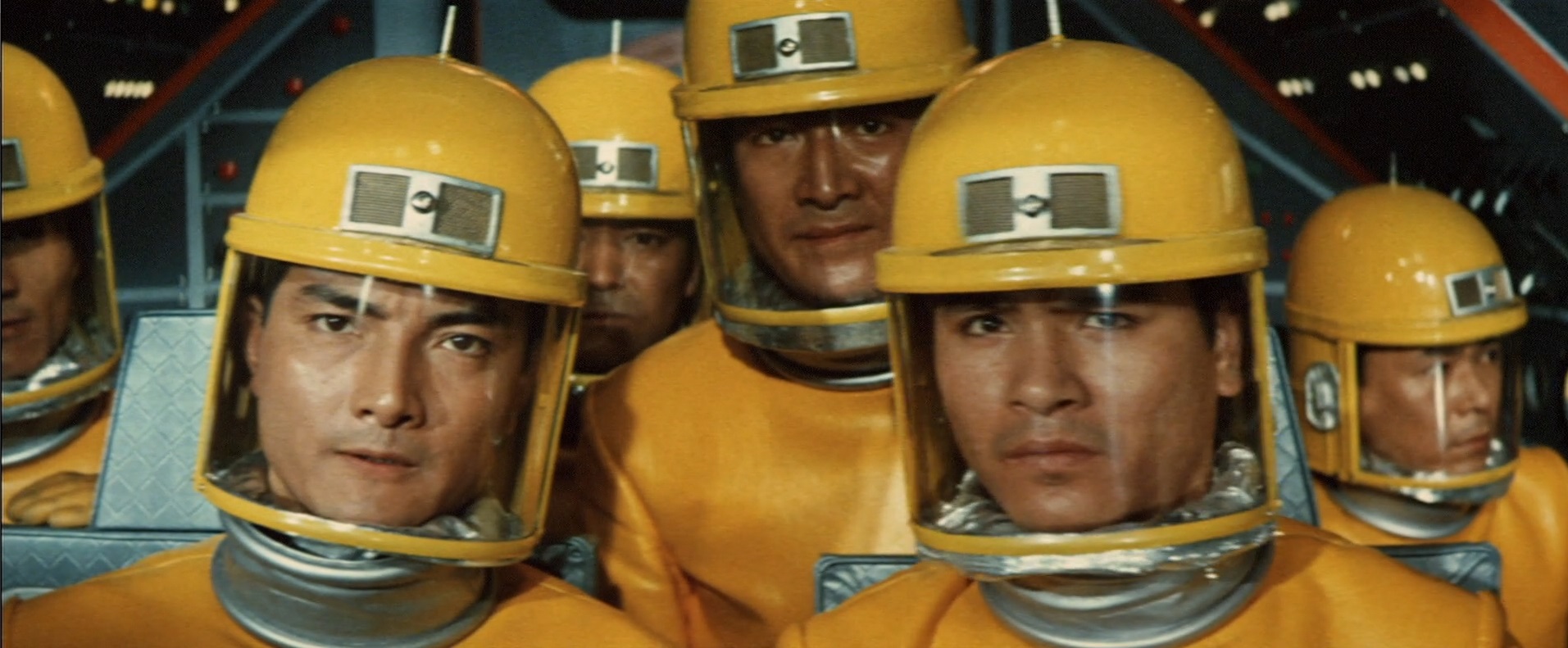





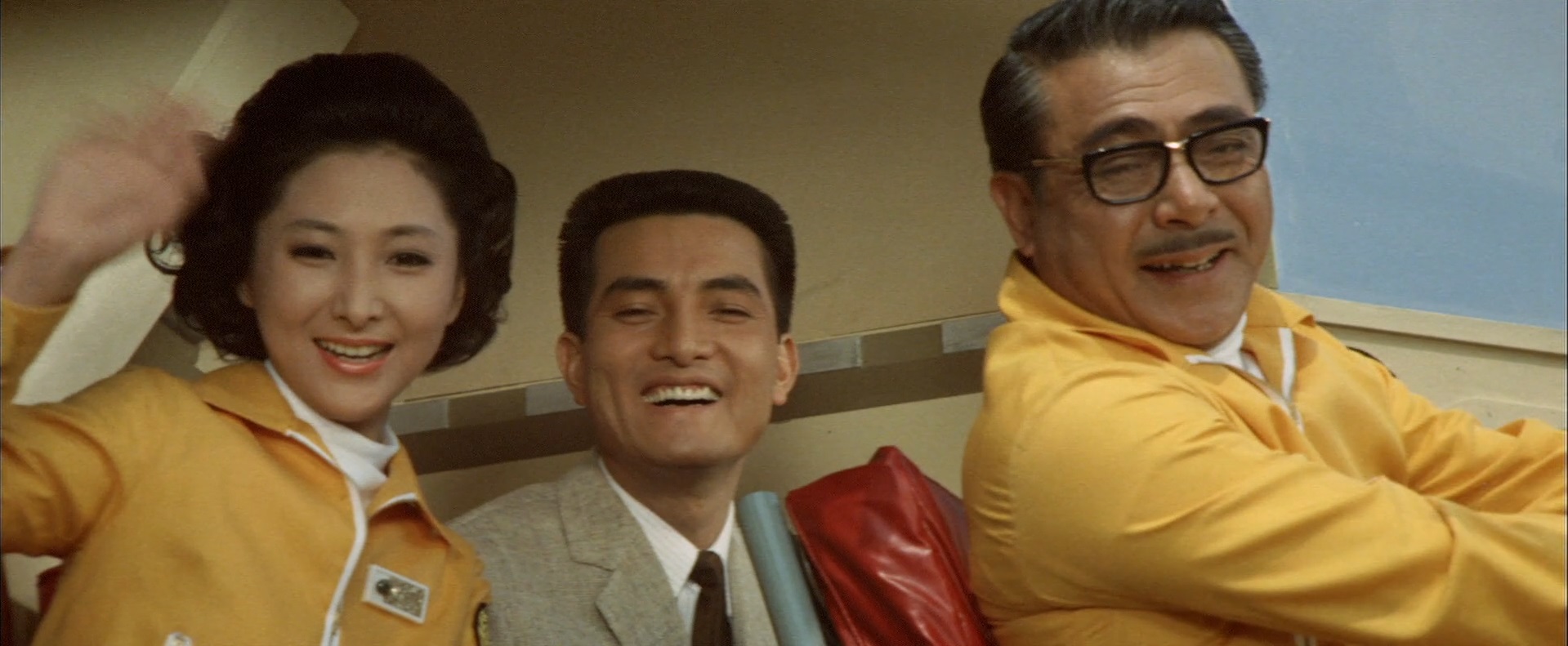


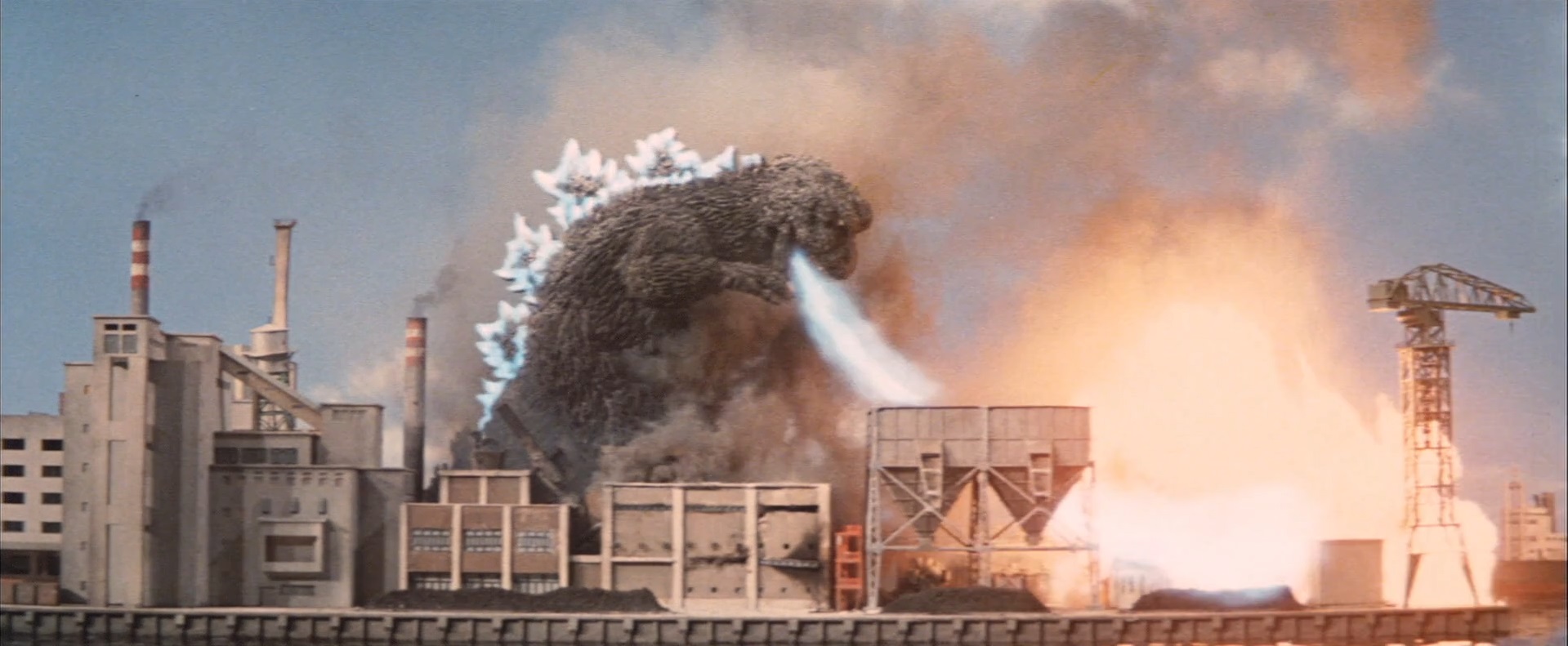






![[July 22, 1969] Let The Sunshine In (More July Books)](https://galacticjourney.org/wp-content/uploads/2024/07/690722covers-672x372.jpg)


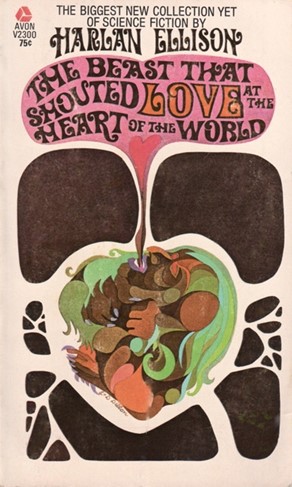

![[July 20, 1969] Today's the day! (August 1969 <i>Fantasy and Science Fiction</i>)](https://galacticjourney.org/wp-content/uploads/2024/07/690720guide-672x372.jpg)


![[July 18, 1969] The Greatest Adventure Lifts Off (Apollo-11, Part 1)](https://galacticjourney.org/wp-content/uploads/2024/07/Apollo-11-launch-1-463x372.png)













































![[July 16, 1969] Not all Jake(s) (July 1969 Galactoscope)](https://galacticjourney.org/wp-content/uploads/2024/07/690716covers-672x372.jpg)


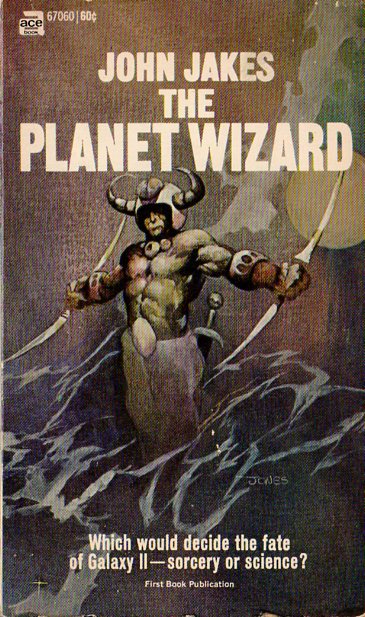

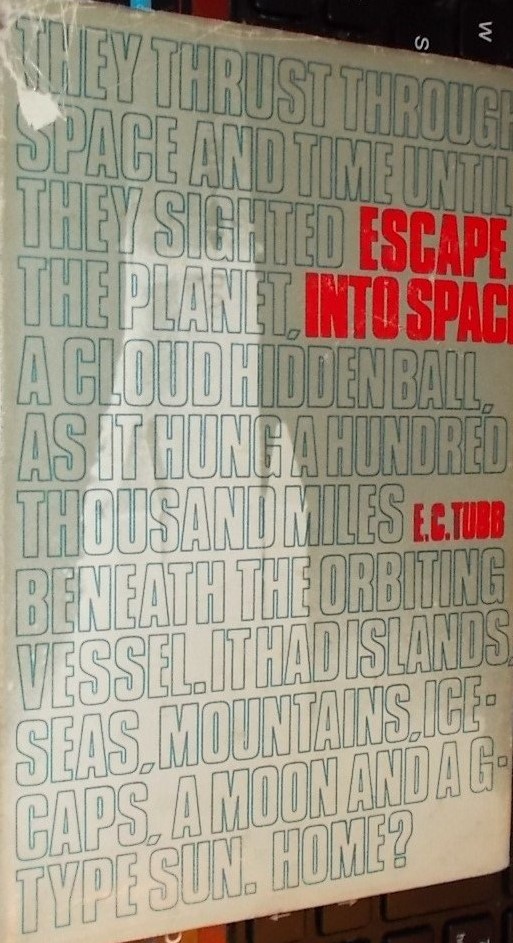











![[July 14, 1969] Odyssey On Two Wheels (<i>Easy Rider</i>)](https://galacticjourney.org/wp-content/uploads/2024/07/TITLE-672x372.png)













